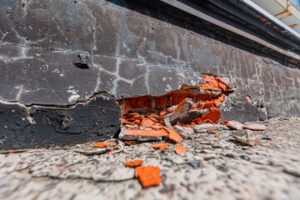7 Figure Accelerator Review explores strategies for generating life-changing income online. The book discusses how to create content that resonates with an audience and the importance of tracking performance metrics.
Affiliates can enjoy flexible working arrangements and financial stability by building ongoing earnings streams. By focusing on providing valuable content and promoting products that align with their audience, they can build trust and foster loyalty.

Identify Your Niche
Your niche is the one thing that separates you from your competitors – and your customers. Think of it like your favorite joke that gets the crowd roaring at the dinner table. It’s the part of your business that makes people remember you – and helps your audience to easily identify what your offering is, why it’s different from other choices, and how it solves their specific problems.
Choosing the right niche will help you create an affiliate marketing strategy that’s more likely to succeed. That’s because it allows you to focus on delivering value and making a difference to your audience. It also ensures that you can build a community of followers and that your content can stand out against the competition.
To find your niche, start by identifying what you’re passionate about and what you’re skilled in. You’ll then need to assess the landscape and make sure that your chosen niche is worth pursuing.
This means taking a close look at the demographics and market trends of your potential audience. You can use online resources to understand consumer pain points and desires. You should also review the competition to understand their techniques and how they connect with their audiences.
Once you’ve narrowed down your options, you can begin testing the market to see how popular and profitable your niche is. One of the best ways to do this is by creating a landing page and running an AdWords campaign for it. This will help you to validate your assumptions and determine if there is enough interest in your niche to sustain your business.
Another way to test your niche is by using relevant forums and hashtags on social media. For example, if you’re a sneakerhead, you can join relevant Reddit subreddits and subscribe to Instagram and TikTok hashtags like #sneakerheads. Then, you can use these communities to assess the demand for your niche and to find products that you can recommend to your audience. Remember to only promote quality products that you can vouch for.
Develop A Strong Strategy
It’s important to be able to create a trusting relationship with your audience. Having an honest approach to affiliate marketing is key to success, so always be transparent with your audience about the products you promote. This can help build trust and increase conversions. It’s also a good idea to use indirect promotion as much as possible. For example, if you’re interviewed for a podcast or a blog post and share a product recommendation, it’s often easier to include an affiliate link in that context than in a standalone piece of content on your website. The Wirecutter, for example, includes eye-catching boxes with product links whenever they publish a top pick.
Another great way to build trust is by offering exclusive discounts and coupons for your audience. This can be a powerful incentive to purchase and helps you stand out from other affiliates. It’s also a great way to reward loyal followers, which will increase the likelihood of future sales and referrals.
In addition to being transparent and building a trustworthy relationship with your audience, it’s important to track metrics and performance. It’s crucial to know exactly how many clicks your affiliate links are getting, which types of content are performing better, and what kind of ROI you’re getting on each campaign. There are several tools available to make this process easier, including affiliate dashboards and Google Analytics integration.
Ultimately, successful affiliates put in the work to create engaging campaigns and learn from their failures. They don’t come into the process with a get-rich-quick mentality and understand that they’ll need to build their skills over time to see results.
Once they find their niche and develop a strong strategy, affiliates can start looking for other partners to work with. This can be done through a variety of methods, including microsites, social media, email, and video content. Creating a diverse network of affiliates can boost visibility and reach, resulting in higher conversion rates.
Most importantly, affiliates must remember that they only earn commissions on a sale when they can make their audience feel confident in the product. It’s not a get-rich-quick scheme, and it requires time and effort to hone your reviewing and writing skills. If you don’t believe in the product you’re promoting, your audience will quickly catch on to this and turn away.
Find Affiliates
Often, the best affiliates are those who already have a relationship with your audience. You can approach them directly with an offer to promote your product or service or find ways to bring your brand and theirs together. For example, you might collaborate on a blog post with your product featured as an expert resource, or you might invite them to take part in an interview for your podcast. This can help to create a level of trust that encourages them to purchase from your affiliate links in the future.
Another way to find affiliates is to search online for those with similar interests and demographics. This method is a great way to target specific audiences and is ideal for finding affiliates who can offer a highly targeted referral program. You can also use an affiliate recruitment agency to streamline the process of recruiting high-quality affiliates.
Lastly, pay attention to the performance of your current affiliates and work with those who have been generating results. Look for those with a high conversion rate and a good track record of promoting your products. It’s a good idea to compare your results against industry standards to identify areas for improvement.
In addition to tracking sales, it’s important to monitor the performance of your affiliates to ensure they are bringing in new customers and driving valuable traffic to your site. Using an analytics platform such as Google Analytics is an excellent way to assess your results and understand what is working and what isn’t.
For example, you may notice that certain products sell well during the fall and winter while others struggle in the summer. You can then direct your focus towards those products during the high season and avoid wasting resources on ones that aren’t performing as expected.
In addition, you should always be honest with your audience about the benefits and drawbacks of your products. If you don’t, your audience may be left feeling misled and distrustful of your recommendations. As such, it’s essential to set expectations with your audience from the beginning so that you can all feel comfortable with the products you promote.
Track Performance
If you’re an affiliate marketer, it’s essential to track your performance. This allows you to gauge the effectiveness of your strategy and make adjustments as necessary. However, many affiliates struggle to find the right data and metrics to assess their performance.
Fortunately, there are several useful tools available to help you do just that. For example, Skimlinks provides a platform for publishers to add affiliate links to their content that earn them commissions on sales driven by those links. The tool also helps to automate the process of tracking clicks and conversions so that you can get a clearer picture of your performance over time.
Another important factor in achieving affiliate success is to build strong relationships with your audience. This includes transparently disclosing your affiliate partnerships and only endorsing products that you genuinely believe in. Additionally, it’s a good idea to offer your affiliates resources and support, which can include marketing collateral, product training, and data analytics dashboards. By doing so, you’ll not only strengthen your relationship with them but increase the likelihood of them continuing to promote your brand in the future.
In addition to providing resources, it’s vital to establish a clear strategy for monitoring your performance. High-growth companies monitor 33% more metrics than no-growth companies to evaluate their marketing effectiveness, so you’ll want to ensure that you’re analyzing all of the relevant data. This can include everything from traffic and conversion rates to financial metrics and partner performance.
Finally, to maximize your earning potential, it’s important to diversify your income streams and your traffic sources. Affiliates who truly master the art of affiliate marketing know that one source won’t necessarily be enough to propel them to the top, and as such, they often develop skills in other areas. For example, an affiliate who becomes a Google expert will likely then learn to leverage YouTube or email marketing as well to broaden their earning potential. If you’re ready to take your earnings to the next level, then check out our comprehensive guide for tips and tricks that will unlock your true earning potential.








